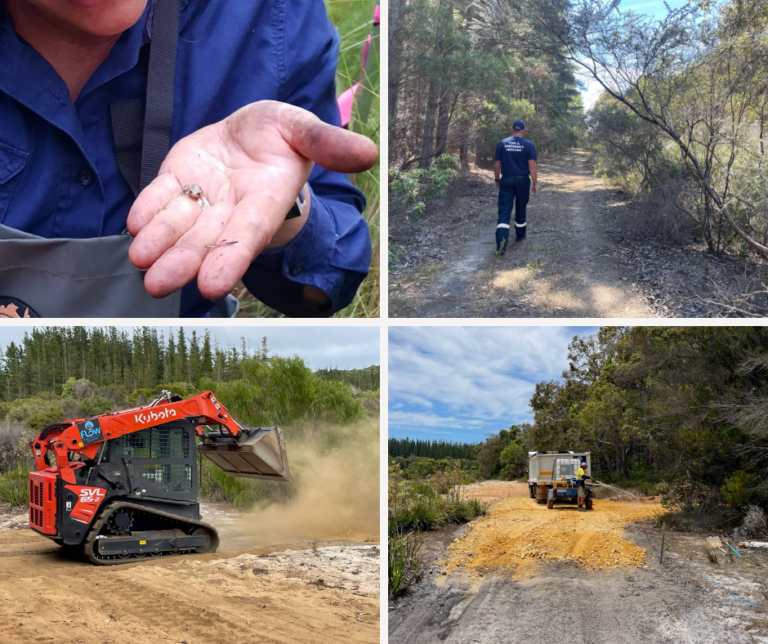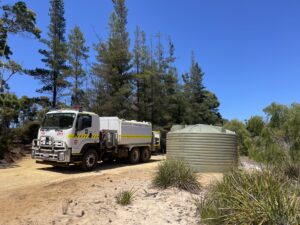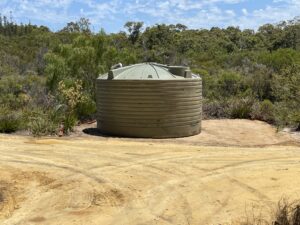
Photo credit (top left): Department of Biodiversity, Conservation & Attractions.
Many businesses might still be on holidays but not our contractors! They’ve been hard at work this week near Margaret River helping with our bold plan to rescue the critically-endangered, white-bellied frog.
With the drying climate making creeklines unsuitable at times for these tiny frogs (about the size of your thumbnail) to live and breed, we’re testing a never-done-before rehydration method in partnership with the Department of Biodiversity, Conservation & Attractions.
Getting a suitable water supply for the irrigation system we plan to install into the difficult-to-access trial site has proven challenging.
But our Project Manager Lorraine has pulled together an incredible band of helpers to get the job done – making this project a true community collaboration.
Team effort for tiny frog
First up, Water Corporation has kindly donated non potable water to the project. Lorraine then brought in Flow Earthworks and Cape to Cape Contractors to help with prep work at the trial site which included:
- Maintenance of an existing fire break. This will enable the crew from Margaret River Volunteer Bushfire Brigade to get their water truck into the trial site where they’ll help fill our 22,500L tank, also being provided by Water Corporation.
- Creation of a hard limestone track and turnaround so the water truck can deliver water to the tank.
- Earthworks for a pad where the water tank will stand.
Coming up soon will be delivery of the tank to the site plus installation of irrigation and a monitoring system with satellite connectivity to measure soil moisture, temperature and water tanker levels.
Also helping pull this whole plan together has been the emergency services team at Augusta-Margaret River Shire.
We’ll be sure to keep you posted as this project progresses.
You can read more about the white-bellied frog and this project via out dedicated project page.
Update – February 4, 2025
The water tank is now in place! If you would like to stay updated on this project, sign up to our monthly e-newsletter.


This project received grant funding from the Australian Government Saving Native Species Program.
